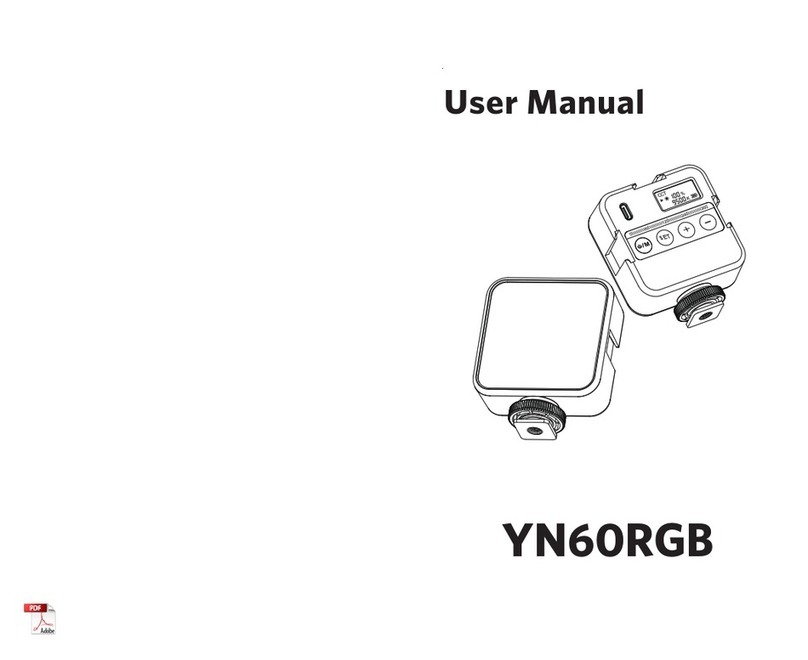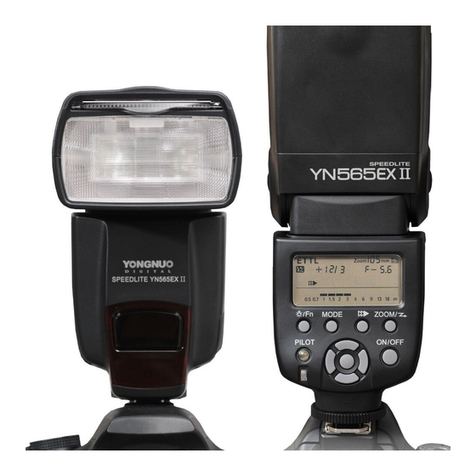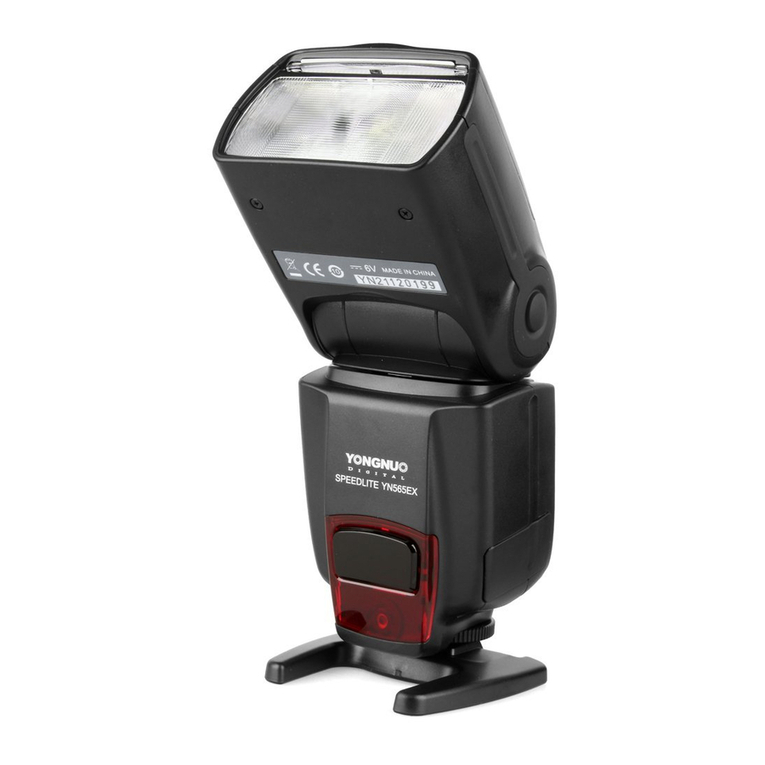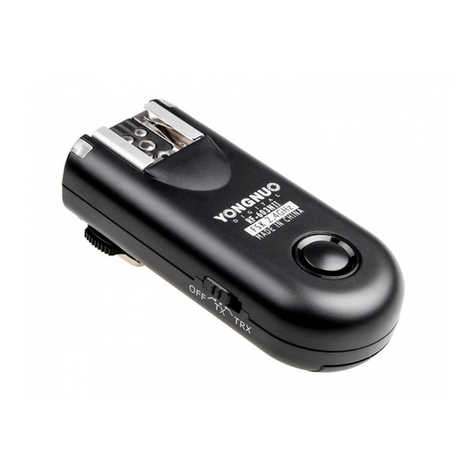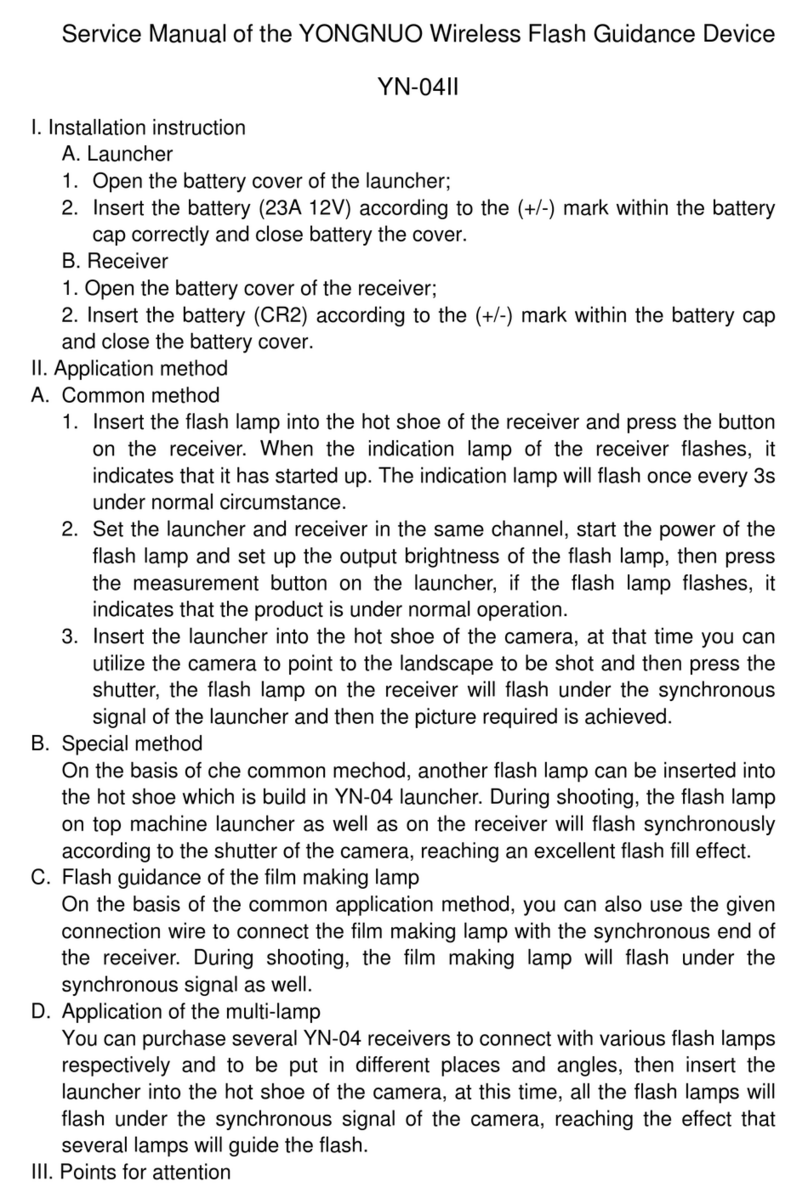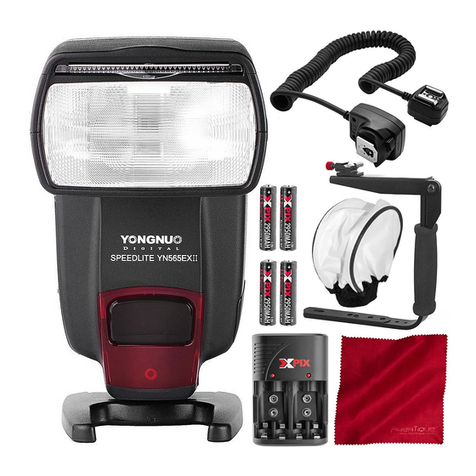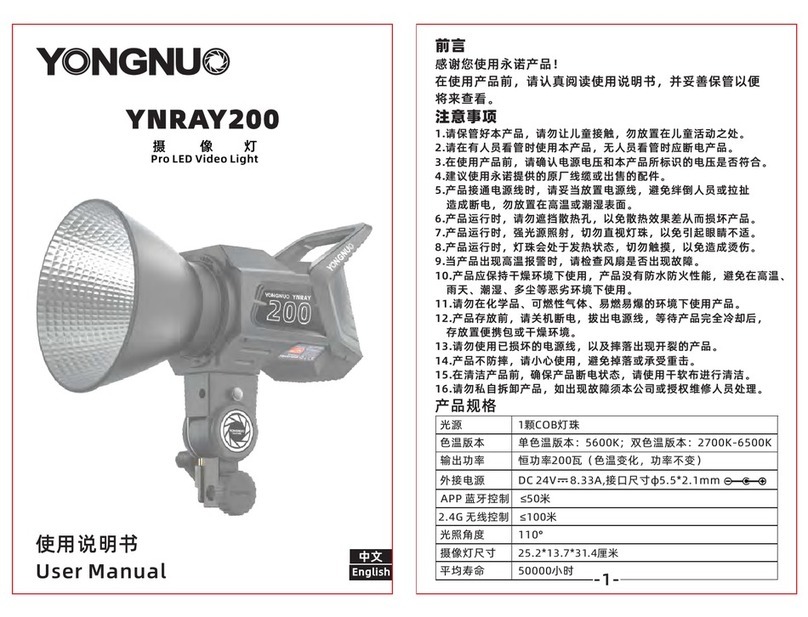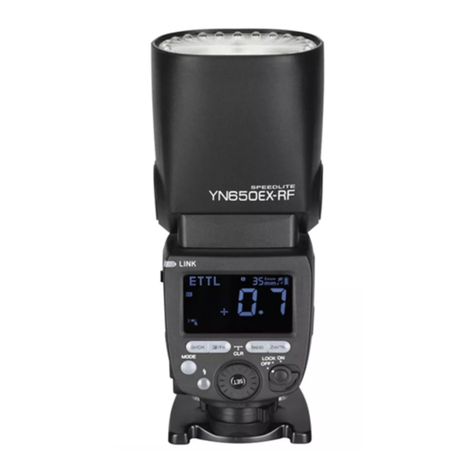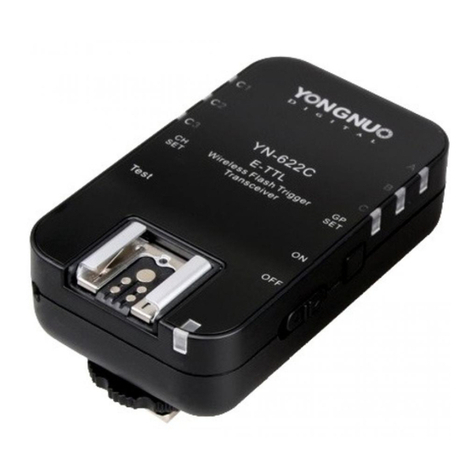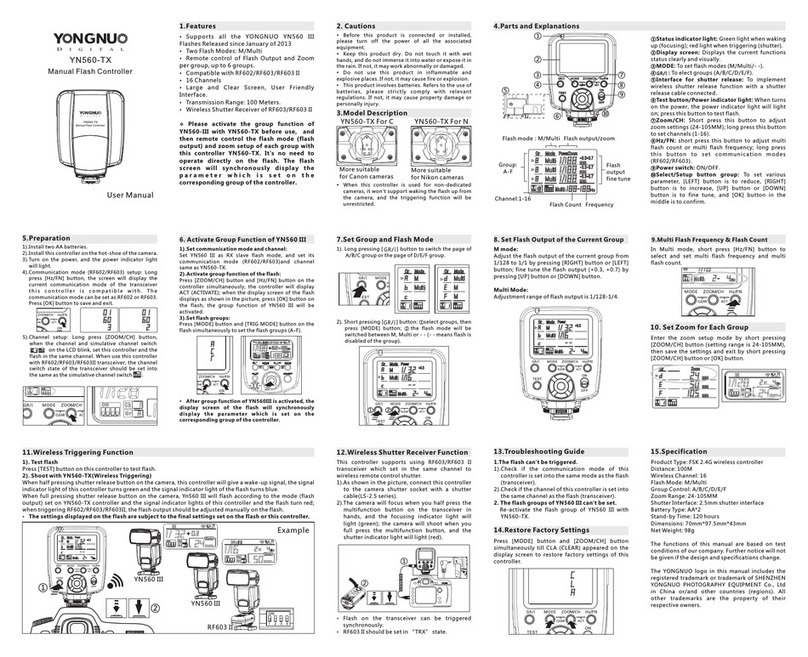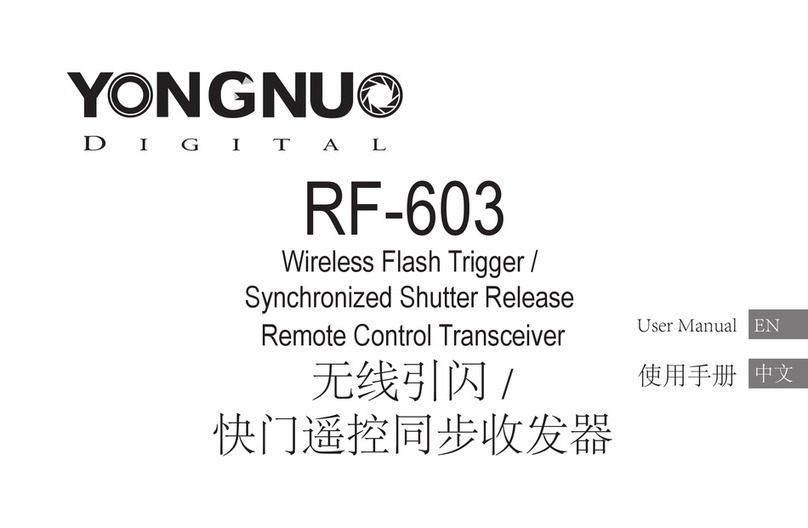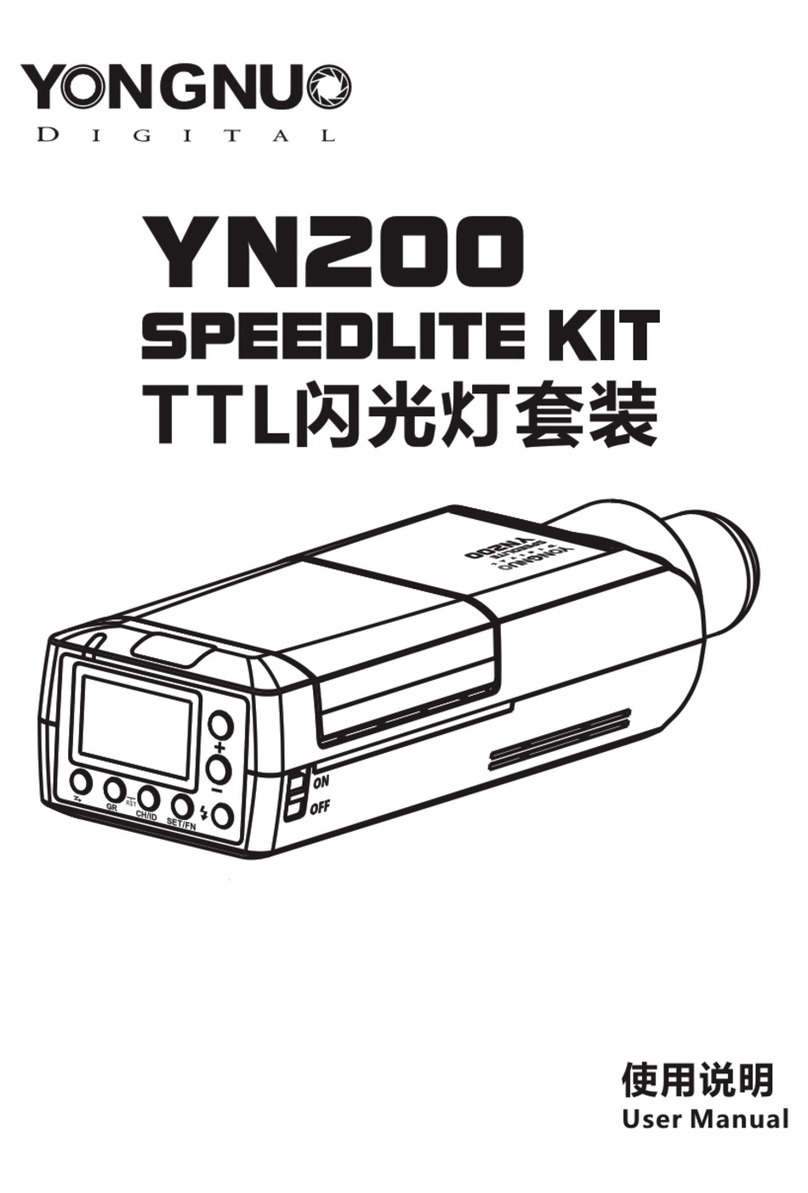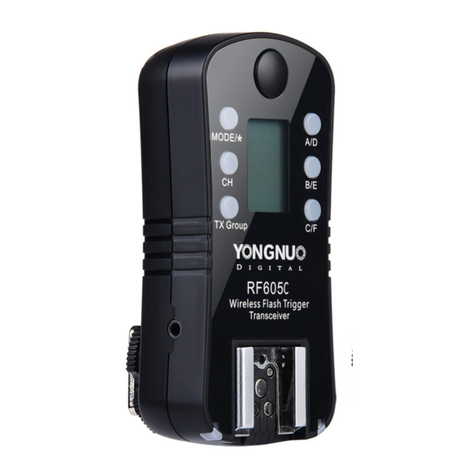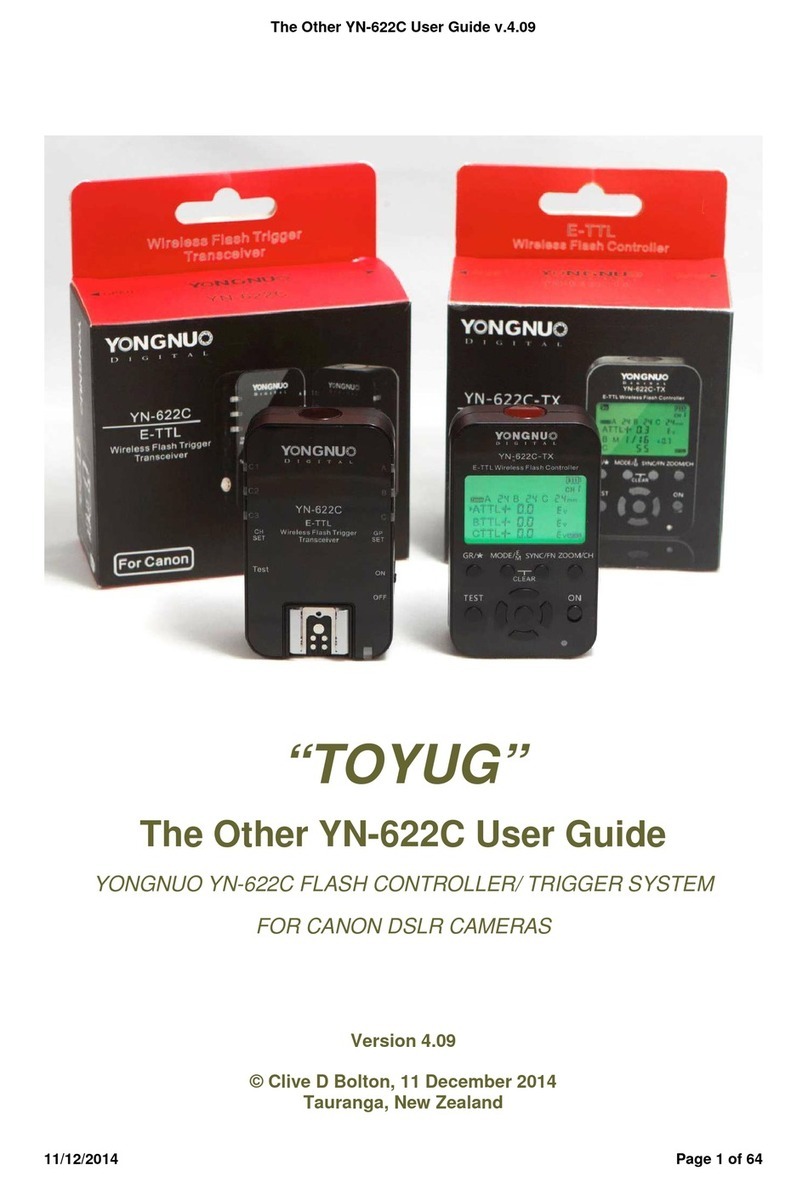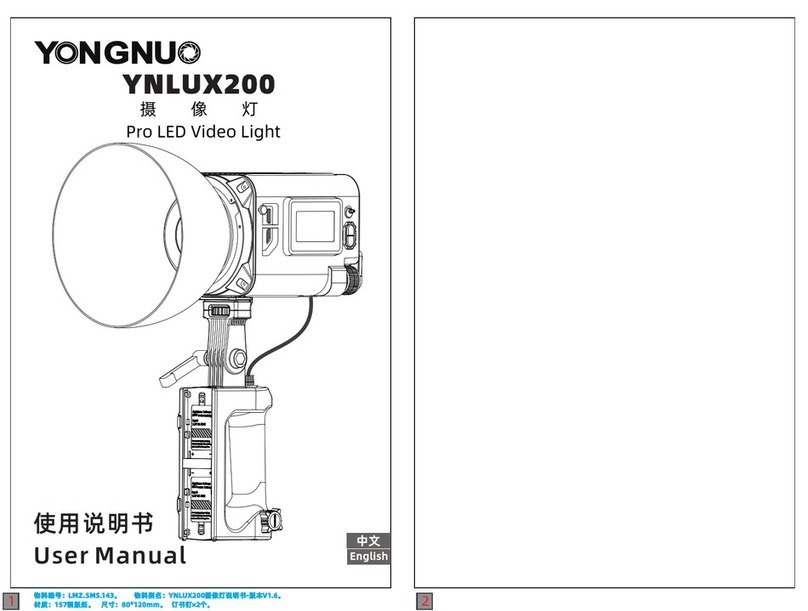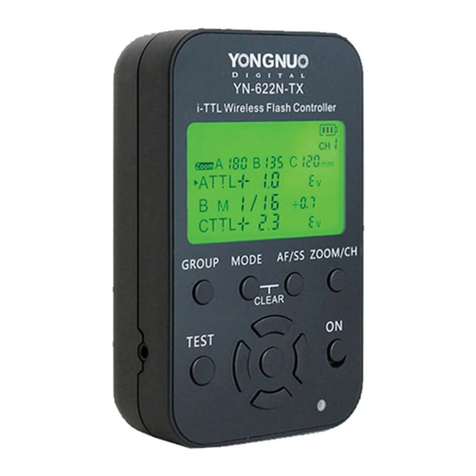available. Continue turning the knob to make the flash light enter
M mode and adjust flash power.
If the charging indicator keeps green for more than 20 seconds,
the flash will power off automatically.
After use, the power of the flash light can be closed by pressing
this button for 2 seconds.
3. TTL Mode
In this mode, the metering system of this camera will detect flash
illumination reflected back from the object so as to automatically
control flash output. When taking photos, you only require aiming
at some scene and press the shutter after focusing, the light will
give proper light as per tips and then you can get your desired
photo.
In the TTL mode, you can also make compensation of flash
brightness with the [Output control knob] within the range of ±3ev,
with the precision of 1/3ev. Please Note that this compensation
setting will override the exposure compensation setting on the
camera.
4. M Mode
In this mode, you can set flash luminance as per your favorite via
【+】 and 【-】 buttons. When taking photos, you only require
setting the flash luminance, adjust the camera and press the shutter,
the flash light will flash under the camera synchronous signal.
5. Multi Mode
The Multi mode is the stroboflash mode. Under this mode, the
flash light will output the power, flash frequency and time flash
you have set. The power can be adjusted by [+] and [-]. The
adjustmentscope of the output power is
1/128-1/64-1/32-1/16-1/8-1/4. If you want to adjust the flash time
and flash frequency, please press [+] once firstly and the output
power will shine. Press [Mode Switch Button] that is the MODE
button under this status, the flash time will shine. The flash time
can be adjusted at this time by pressing [+] and [-]. Then press
[Mode Switch Button] again, the flash frequency starts to shine.
The flash time can be adjusted at this time by pressing [+] and [-].
NOTE: The charging speed of the flash light is slow under the
situation that the electricity quantity of the battery is insufficient, which
may cause the occurrence of the high-frequency flash. Please reduce
the flash frequency or change new battery under this situation.
